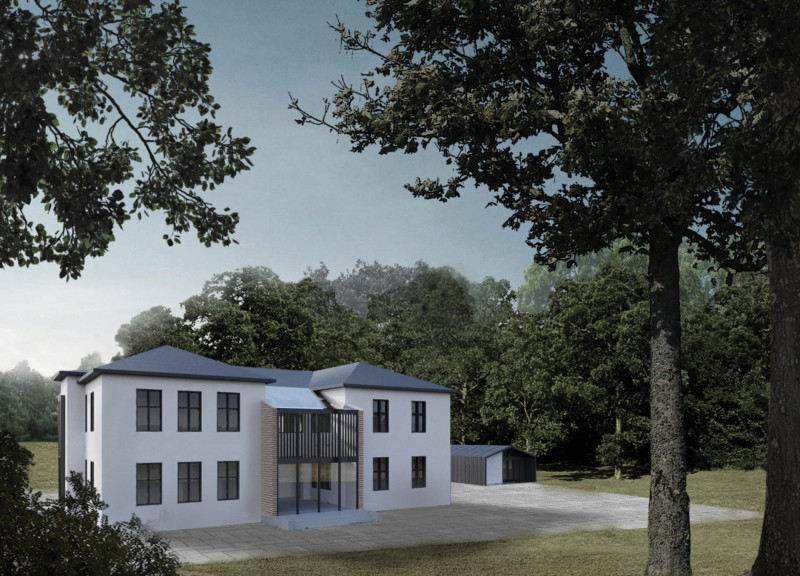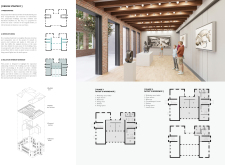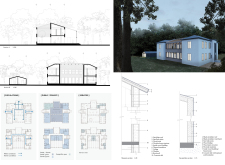5 key facts about this project
The Omuli Museum of the Horse is an architectural project located within the North Vízbeň Biosphere Reserve. This facility integrates a historical narrative with contemporary design principles, focusing on the cultural significance of horses. The museum serves multiple functions including exhibition spaces, workshops, and artist residences. It aims to foster artistic creativity while promoting a connection between art, history, and nature.
One of the notable features of the project is the preservation of the existing structure of the old Omuli School. This aspect underscores the importance of historical integrity within modern architectural interventions. The design incorporates a meticulous approach to maintain key elements of the school’s architecture while introducing new spaces that facilitate interaction, learning, and community engagement.
The architectural language of the Omuli Museum emphasizes connectivity. The layout includes artist workshops, living quarters, and exhibition areas that promote collaboration. Large openings and windows facilitate natural light, creating an inviting atmosphere while providing views of the surrounding landscape. The use of a double facade enhances the interaction between indoor and outdoor spaces, creating a seamless transition that encourages visitors to engage with the environment.
Material selection plays a crucial role in the overall aesthetic and functionality of the museum. Locally sourced materials such as brick, wood, steel, and concrete have been carefully chosen for their ability to resonate with the local context. The incorporation of these materials not only reinforces the project’s historical relevance but also ensures durability and ease of maintenance, which are essential for a public facility.
Sustainability is addressed in the design through features such as light wells and a central courtyard. These elements optimize natural ventilation and daylighting, reducing the need for artificial lighting and promoting passive climate control. The landscaping surrounding the museum includes native vegetation, further integrating the project into its natural setting and enhancing biodiversity.
The Omuli Museum stands out from other cultural facilities due to its commitment to blending artistic, historical, and environmental contexts. Its design does not solely focus on functionality; it also emphasizes the experiential aspect of engaging with art and nature. The layout allows for flexibility, accommodating various cultural programs and exhibitions that can evolve over time.
For a deeper understanding of the project's architectural ideas, plans, sections, and detailed designs, readers are encouraged to explore the presentation of the Omuli Museum of the Horse. This resource will provide a comprehensive overview of its architectural solutions and unique attributes.






















































